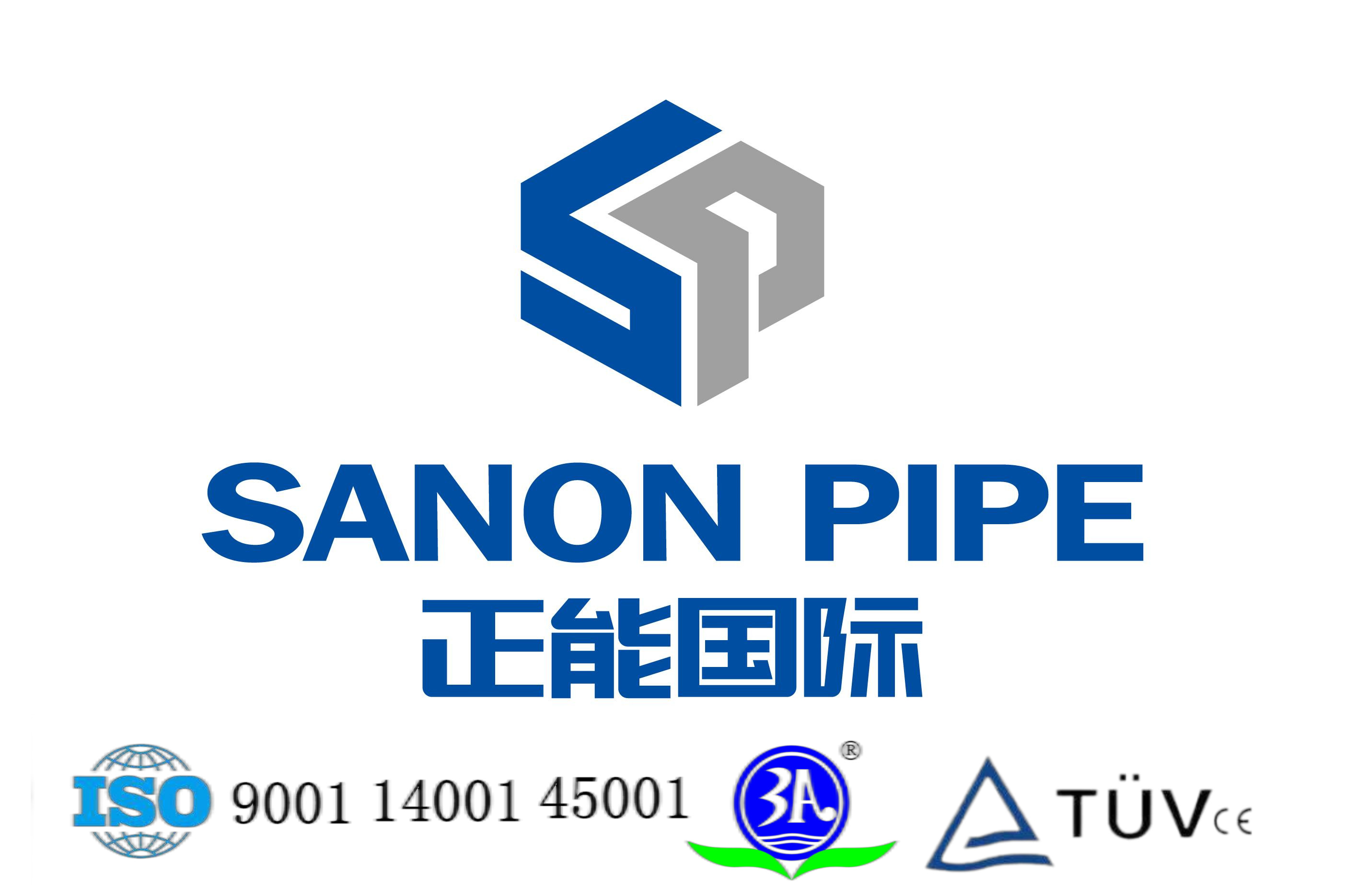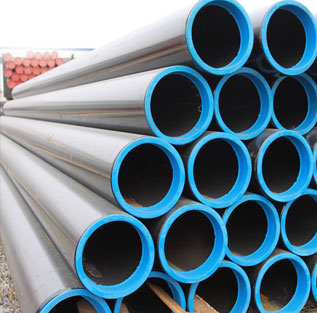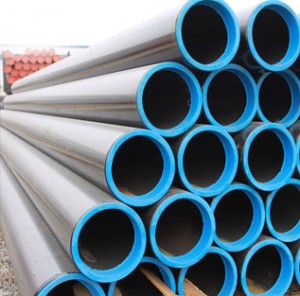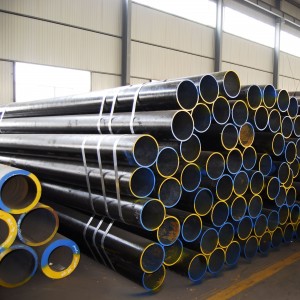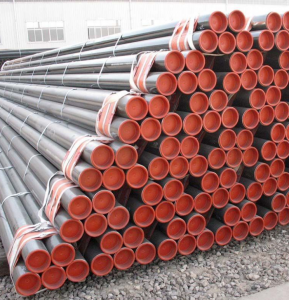Professional China Boiler, Boiler Tube
Our company specializes in exporting various steel pipes Boiler Pipes, Boiler steel pipes, boiler steel tubes, boiler tubes, China Boiler. Many trade novices will encounter problems when quoting, for example difference between steel actual weight and theoretical weight. Let me answer this question for everyone.
1. Theoretical weight of steels
The theoretical weight of steels is obtained by calculating nominal dimensions and density (which is called specific weight in the past). This is directly related with the steel length, the cross section area, and the allowable size deviation. Because of the allowable deviation in the process of manufacturing, the calculated theoretical weight is somehow different from the actual value, and the theoretical value is only for reference while estimating。
2. Actual weight of steel
Actual weight of steel refers to the weight obtained by actual weighting (with a scale). The actual weight is more accurate than the theoretical weight.
3. Methods for calculating weight of steel
KG/M=(OD-WT)*WT*0.02466
Overview
Application
It is mainly used to make high-quality carbon structural steel, alloy structural steel and stainless heat-resistant steel seamless steel pipes for high pressure and above steam boiler pipes.
Mainly used for high pressure and high temperature service of boiler(Superheater tube, reheater tube, air guide tube, main steam tube for high and ultra high pressure boilers). Under the action of high temperature flue gas and water vapor, the tube will oxidize and corrode. It is required that the steel pipe has high durability, high resistance to oxidation and corrosion, and good structural stability.
Main Grade
Grade of high-quality carbon structural steel: 20g、20mng、25mng
Grade of alloy structural steel: 15mog、20mog、12crmog、15crmog、12cr2mog、12crmovg、12cr3movsitib, etc
Grade of rust-resistant heat-resistant steel: 1cr18ni9 1cr18ni11nb
Chemical Component
| Grade |
Quality Class |
Chemical Property |
||||||||||||||
|
C |
Si |
Mn |
P |
S |
Nb |
V |
Ti |
Cr |
Ni |
Cu |
Nd |
Mo |
B |
Als” |
||
|
不大于 |
不小于 |
|||||||||||||||
| Q345 | A |
0.20 |
0.50 |
1.70 |
0.035 | 0.035 |
0.30 |
0.50 |
0.20 |
0.012 |
0.10 |
— | — | |||
| B | 0.035 | 0.035 | ||||||||||||||
| C | 0.030 | 0.030 |
0.07 |
0.15 |
0.20 |
0.015 |
||||||||||
| D |
0.18 |
0.030 | 0.025 | |||||||||||||
| E | 0.025 | 0.020 | ||||||||||||||
| Q390 | A |
0.20 |
0.50 |
1.70 |
0.035 | 0.035 |
0.07 |
0.20 |
0.20 |
0.3。 |
0.50 |
0.20 |
0.015 |
0.10 |
— | — |
| B | 0.035 | 0.035 | ||||||||||||||
| C | 0.030 | 0.030 |
0,015 |
|||||||||||||
| D | 0.030 | 0.025 | ||||||||||||||
| E | 0.025 | 0.020 | ||||||||||||||
| Q42O | A |
0.20 |
0.50 |
1.70 |
0.035 | 0.035 |
0.07 |
0.2。 |
0.20 |
0.30 |
0.80 |
0.20 |
0.015 |
0.20 |
— |
— |
| B | 0.035 | 0.035 | ||||||||||||||
| C | 0.030 | 0.030 |
0.015 |
|||||||||||||
| D | 0.030 | 0.025 | ||||||||||||||
| E | 0.025 | 0.020 | ||||||||||||||
| Q46O | C |
0.20 |
0.60 |
1.80 |
0.030 | 0.030 |
0.11 |
0.20 |
0.20 |
0.30 |
0.80 |
0.20 |
0.015 |
0.20 |
0.005 |
0.015 |
| D | 0.030 | 0.025 | ||||||||||||||
| E | 0.025 | 0.020 | ||||||||||||||
| Q500 | C |
0.18 |
0.60 |
1.80 |
0.025 | 0.020 |
0.11 |
0.20 |
0.20 |
0.60 |
0.80 |
0.20 |
0.015 |
0.20 |
0.005 |
0.015 |
| D | 0.025 | 0.015 | ||||||||||||||
| E | 0.020 | 0.010 | ||||||||||||||
| Q550 | C |
0.18 |
0.60 |
2.00 |
0.025 | 0,020 | 0.11 |
0.20 |
0.20 |
0.80 |
0.80 |
0.20 |
0.015 |
0.30 |
0.005 |
0.015 |
| D | 0.025 | 0,015 | ||||||||||||||
| E | 0.020 | 0.010 | ||||||||||||||
| Q62O | C |
0.18 |
0.60 |
2.00 |
0.025 | 0.020 |
0.11 |
0.20 |
0.20 |
1.00 |
0.80 |
0.20 |
0.015 |
0.30 |
0.005 |
0.015 |
| D | 0.025 | 0.015 | ||||||||||||||
| E | 0.020 | 0.010 | ||||||||||||||
| Except for Q345A and Q345B grades, the steel should contain at least one of the refined grain elements Al, Nb, V, and Ti. According to the needs, the supplier can add one or more refined grain elements, the maximum value Should meet the requirements in the table. When combined, Nb + V + Ti <0.22% °For Q345, Q390, Q420 and Q46O grades, Mo + Cr <0.30% oWhen each grade of Cr and Ni is used as the residual element, the content of Cr and Ni should not be more than 0.30%; when it needs to be added, its content should meet the requirements in the table or be determined by the supplier and the buyer through consultation.J If the supplier can guarantee that the nitrogen content meets the requirements in the table, the nitrogen content analysis may not be performed. If Al, Nb, V, Ti and other alloy elements with nitrogen fixation are added to the steel, the nitrogen content is not limited. The nitrogen fixation content should be specified in the quality certificate.’When using all aluminum, the total aluminum content AIt ^ 0.020% B | ||||||||||||||||
Mechanical Property
|
No |
Grade |
Mechanical Property |
||||
|
|
|
Tensile |
Yield |
Extend |
Impect (J) |
Handness |
|
1 |
20G |
410- |
≥ |
24/22% |
40/27 |
— |
|
2 |
20MnG |
415- |
≥ |
22/20% |
40/27 |
— |
|
3 |
25MnG |
485- |
≥ |
20/18% |
40/27 |
— |
|
4 |
15MoG |
450- |
≥ |
22/20% |
40/27 |
— |
|
6 |
12CrMoG |
410- |
≥ |
21/19% |
40/27 |
— |
|
7 |
15CrMoG |
440- |
≥ |
21/19% |
40/27 |
— |
|
8 |
12Cr2MoG |
450- |
≥ |
22/20% |
40/27 |
— |
|
9 |
12Cr1MoVG |
470- |
≥ |
21/19% |
40/27 |
— |
|
10 |
12Cr2MoWVTiB |
540- |
≥ |
18/-% |
40/- |
— |
|
11 |
10Cr9Mo1VNbN |
≥ |
≥ |
20/16% |
40/27 |
≤ |
|
12 |
10Cr9MoW2VNbBN |
≥ |
≥ |
20/16% |
40/27 |
≤ |
Tolerance
Wall Thickness and Outter Diameter:
If there is no special requirements, pipe gonna be delivery as norminal outter diameter and norminal wall thickness. As follow sheet
|
Classification designation |
Method of manufacture |
Size of pipe |
Tolerance |
|||
|
Normal grade |
High grade |
|||||
|
W H |
Hot Rolled(extrude) pipe |
Norminal outter Diameter (D) |
<57 |
士 0.40 |
±0,30 |
|
|
57 〜325 |
SW35 |
±0.75%D |
±0.5%D |
|||
|
S>35 |
±1%D |
±0.75%D |
||||
|
>325 〜6。。 |
+ 1%D or + 5.Take lesser one一2 |
|||||
|
>600 |
+ 1%D or + 7,Take lesser one一2 |
|||||
|
Norminal Wall Thickness (S) |
<4.0 |
±|・丨) |
±0.35 |
|||
|
>4.0-20 |
+ 12.5%S |
±10%S |
||||
|
>20 |
DV219 |
±10%S |
±7.5%S |
|||
|
心219 |
+ 12.5%S -10%S |
土 10%S |
||||
|
W-H |
Thermal expansion pipe |
Norminal outter Diameter
(D) |
all |
±1%D |
±0.75%。 |
| Norminal Wall Thickness
(S) |
all |
+ 20%S -10%S |
+ 15%S -io%s |
||
|
W-C |
Cold drawn(rolled) Ppipe |
Norminal outter Diameter
(D) |
<25.4 |
±’L1j |
— |
|
>25.4 〜4() |
±0.20 |
||||
|
>40 〜50 |
|:0.25 |
— |
|||
|
>50 〜60 |
±0.30 |
||||
|
>60 |
±0.5%D |
||||
|
Norminal Wall Thickness (S) |
<3.0 |
±0.3 |
±0.2 |
||
|
>3.0 |
S |
±7.5%S |
Length:
The usual length of steel pipes is 4 000 mm ~ 12 000 mm. After consultation between the supplier and the buyer, and fill in the contract, it can be delivered steel pipes with a length greater than 12 000 mm or shorter than I 000 mm but not shorter than 3 000 mm; short length The number of steel pipes less than 4,000 mm but not less than 3,000 mm shall not exceed 5% of the total number of steel pipes delivered
Delivery weight:
When the steel pipe is delivered according to the nominal outer diameter and nominal wall thickness or the nominal inner diameter and nominal wall thickness, the steel pipe is delivered according to the actual weight. It can also be delivered according to the theoretical weight.
When the steel pipe is delivered according to the nominal outer diameter and minimum wall thickness, the steel pipe is delivered according to the actual weight; the supply and demand parties negotiate. And it is indicated in the contract. The steel pipe can also be delivered according to the theoretical weight.
Weight tolerance:
According to the requirements of the purchaser, after consultation between the supplier and the purchaser, and in the contract, the deviation between the actual weight and the theoretical weight of the delivery steel pipe shall meet the following requirements:
a) Single steel pipe: ± 10%;
b) Each batch of steel pipes with a minimum size of 10 t: ± 7.5%.
Test Requirement
Hydraustatic Test:
The steel pipe should be tested hydraulically one by one. The maximum test pressure is 20 MPa. Under the test pressure, the stabilization time should be not less than 10 s, and the steel pipe should not leak.
After the user agrees, the hydraulic test can be replaced by eddy current testing or magnetic flux leakage testing.
Nondestructive Test:
Pipes that require more inspection should be ultrasonically inspected one by one. After the negotiation requires the consent of the party and is specified in the contract, other non-destructive testing can be added.
Flattening Test:
Tubes with an outer diameter greater than 22 mm shall be subjected to a flattening test. No visible delamination, white spots, or impurities should occur during the entire experiment.
Flaring Test:
According to the requirements of the purchaser and stated in the contract, the steel pipe with outer diameter ≤76mm and wall thickness ≤8mm can be done flaring test . The experiment was performed at room temperature with a taper of 60 °. After the flaring, the flaring rate of the outer diameter should meet the requirements of the following table, and the test material must not show cracks or rips
|
Steel Type
|
Outter diameter flaring rate of steel pipe/% |
||
|
Inner Diameter/Outter Diameter |
|||
|
<0.6 |
>0.6 〜0.8 |
>0.8 |
|
|
High-quality carbon structural steel |
10 |
12 |
17 |
|
Structural alloy steel |
8 |
10 |
15 |
| •The inner diameter is calculated for the sample. | |||
